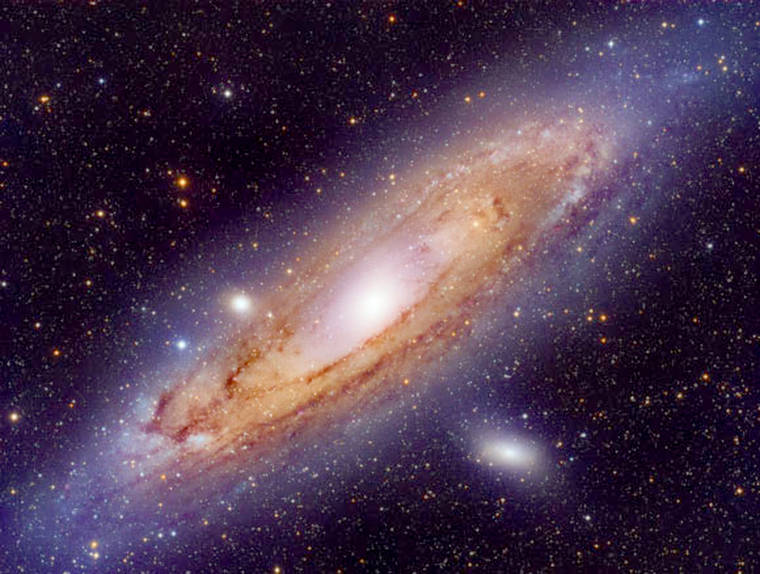KEASA, your local astronomy club, is full of members who love to share views of our night sky with the public through our free starwatches at the Kaumakani school softball field each month.
Mahalo to all who have been coming; turnout has been great. Anyone who has never looked through a high-power telescope before is usually amazed by what they see. If you have been before, then come back as the sky always changes throughout the year.
The planets have really put on an early evening show over the past few months. However, Jupiter will be disappearing from the early evening sky as it slips behind the sun.
Saturn and Venus will still be visible in the west shortly after sunset, Venus being the brightest object in our night sky after the moon, and Saturn being somewhat dimmer but still bright enough to be among the first objects you will see at dusk.
In late December, Saturn will also disappear behind the sun. Before it does, look for Venus, a crescent moon, and Saturn to make a beautiful close grouping on Dec. 27 shortly after sunset. Then on the 28, the moon will appear less than two full moon widths away from Venus also shortly after sunset
The Geminids meteor shower will peak on Dec. 13, which unfortunately is near the full moon. This is usually considered the best meteor shower of the year, but the light of a full moon will make them harder to see. However, look up in mid-December and you may be able to see some of the brighter meteors.
High overhead in the evening night sky during the month of December will be the constellation Andromeda. When you look up with your naked eye, every object you see is within our own Milky Way Galaxy, with one exception – the Andromeda Galaxy. If you are away from bright lights, it appears as a dim fuzzy patch about the size of the full moon.
The Andromeda Galaxy is its own island of 1 trillion stars, more then even our own galaxy! It is the nearest major galaxy to our own, although we do have several closer dwarf galaxies in orbit around the Milky Way.
Through a telescope, not only can you see the Andromeda Galaxy in far more detail, but you can see that it also has its own dwarf galaxies orbiting around it! Because the observable universe contains about 1 trillion galaxies, on any given night there are always several that can be seen with a big enough telescope such as those we bring out for our starwatches.
Near Andromeda is the constellation Pegasus, found by located its four brightest stars which make a large square called The Great Square. Modern Hawaiian navigators call it “Ka Lupe o Kawelo”, or the kite of Kawelo.
This refers to the story of a young Kawelo, a great alii of Kauai, and his powerful cousin, Kauahoa. Kawelo saw Kauahoa flying a kite, and knocked it down with his own kite, foretelling his rise to power. It makes up one of the four major star lines used by navigators to memorize the position of bright stars.
KEASA (Kauai Educational Association for Science and Astronomy) will be hosting its monthly public starwatch at the Kaumakani school softball field on Saturday, Dec. 21. Check out our website at keasa.org for the full schedule. Come join us at sunset and bring a comfortable chair or blanket.
Our astronomers look forward to sharing these objects and more through our telescopes. If the weather is in doubt, call 346-5796 to verify the event is still on. While there, speak to one of our members about the benefits of membership, we need more stargazers and astronomy enthusiasts to carry KEASA into the future! Aloha, and clear skies everyone!
•••
David Bickham, Vice President, KEASA The Andromeda Galaxy.


